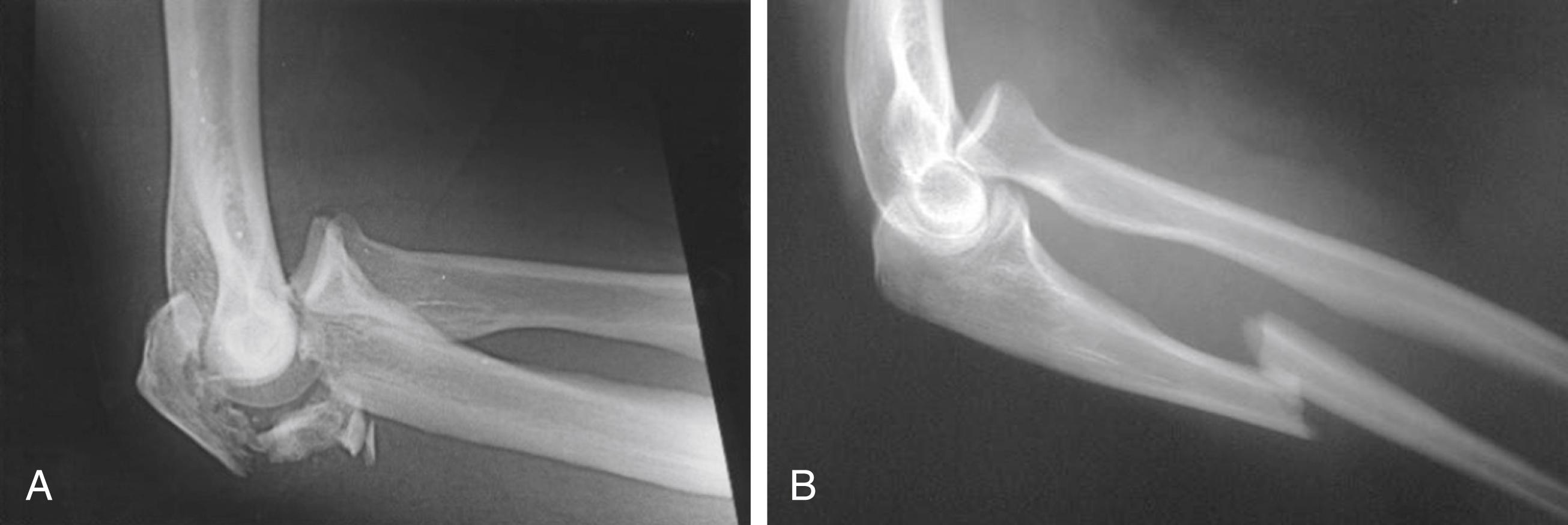Physical Address
304 North Cardinal St.
Dorchester Center, MA 02124
Anterior olecranon fracture-dislocation of the elbow (also referred to as transolecranon fracture-dislocation) is characterized by disruption of the trochlear notch, loss of radiocapitellar alignment, maintenance of some apposition of the articular surfaces, intact collateral ligaments, and a normal radioulnar relationship ( Fig. 54.1 ). , The loss of the elbow congruity is due to fracture of the olecranon and coronoid rather than ligament injury. The proximal radioulnar joint can be affected by the coronoid fracture, but the radial head is not fractured. The goal of treatment is stable restoration of concentric elbow joint alignment. The olecranon and coronoid fragments are realigned and secured to the ulnar shaft.

It is important to distinguish this injury from a forearm fracture-dislocation or anterolateral Monteggia injury. In a transolecranon fracture-dislocation, the radioulnar relationship remains intact ( Fig. 54.1A ). The primary surgical aim is to restore the trochlear notch and proximal ulna. In contrast, anterolateral Monteggia forearm fracture-dislocations feature dislocation of the proximal radioulnar joint and fracture of the ulna diaphysis ( Fig. 54.1B ). For forearm fracture-dislocations, the key is anatomical alignment of the ulnar shaft, which restores alignment of the radiocapitellar joint and the proximal radioulnar joint.
Become a Clinical Tree membership for Full access and enjoy Unlimited articles
If you are a member. Log in here